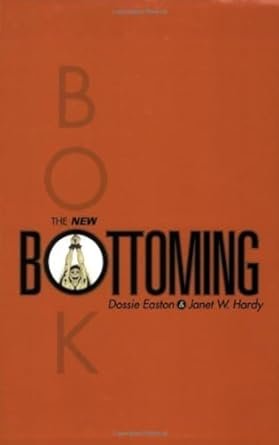Overview of SM 101: A Realistic Introduction
“SM 101: A Realistic Introduction” is a significant work authored by Jay Wiseman, a notable figure within the BDSM community. With years of experience and a wealth of knowledge, Wiseman provides comprehensive insights into the practices and philosophies surrounding BDSM. His background as a practitioner and educator informs the content of this book, making it a valuable resource for individuals seeking to explore this world safely and consensually.
The primary purpose of “SM 101” is to offer an informative guide to BDSM, aimed at both novices and seasoned practitioners. It serves to demystify BDSM practices, emphasizing the importance of safety, consent, and communication within power exchanges. Wiseman’s approach is pragmatic; he encourages readers to engage with BDSM in a responsible and considerate manner. The book addresses essential topics such as negotiation, risk awareness, and aftercare, all critical factors in ensuring a secure environment for participants.
This book is structured to meet the needs of its diverse audience, featuring straightforward explanations and practical advice. Wiseman recognizes that many individuals might feel intimidated by the vastness of the BDSM landscape. Therefore, he breaks down complex concepts into digestible segments, allowing readers to grasp fundamental principles without feeling overwhelmed. Each chapter showcases different aspects of BDSM, from the psychological dimensions of kink to the exploration of various techniques, ensuring a holistic understanding of the subject.
In a community that values education and informed consent, “SM 101: A Realistic Introduction” stands out as a foundational text. It not only informs but also empowers its readers, reinforcing the idea that BDSM can be practiced safely and responsibly. This book solidifies its significance within the BDSM community by fostering an inclusive atmosphere for exploration and understanding.

It goes by many names: bondage and discipline, dominance and submission, sadomasochism, and more. In Jay Wiseman’s SM 101, the long-taboo subject of consensual sadomasochism is accurately, insightful presented in the context of adult human sexuality, experience and tradition for the interested non-specialist general reader. SM 101 surveys the entire spectrum of consensual sadomasochistic practices from from bondage, to spanking, to erotic role-playing, and more. Now in an expanded second edition, SM 101 includes a new chapter on starting and running sadomaschistic organizations and events for consenting adults.
Key Concepts and Practices in BDSM
In “SM 101,” Jay Wiseman presents a thorough exploration of essential BDSM concepts and practices, which serve as the foundation for understanding this intricate subculture. At the heart of BDSM lies the significance of consent and negotiation, two principles that are paramount for all participants. Consent is not merely a formality; it is a fundamental component that ensures that all parties involved are fully aware of their boundaries and desires. Negotiation allows individuals to discuss their limits and preferences before engaging in any activity, establishing a framework for trust and safety.
BDSM encompasses a variety of roles, commonly categorized into dominants, submissives, and switch roles, where an individual may alternate between dominance and submission. Understanding these roles is crucial for participants to navigate their experiences effectively. Moreover, Wiseman emphasizes the distinction between soft and hard limits, which refers to the negotiable and non-negotiable boundaries respectively. This differentiation allows for a safer exploration of desires while ensuring that participants respect each other’s limits.
A range of activities and techniques are intrinsic to BDSM, including bondage, discipline, dominance, submission, sadism, and masochism. Wiseman delves into each of these elements, providing insights into their practical application while advocating for safe practices. For example, bondage may involve the use of ropes, cuffs, or harnesses, and should always be approached with an emphasis on safety measures such as the ability to quickly release a partner if necessary. By presenting practical advice on these activities, Wiseman fosters a supportive environment for newcomers and experienced practitioners alike, emphasizing the importance of safety and communication.
Overall, “SM 101” serves as an essential guide for individuals interested in exploring BDSM, offering valuable lessons on the implementation of safety measures and the importance of establishing mutual understanding among participants.
Safety and Aftercare in BDSM
Safety is a paramount consideration in BDSM practices, and Jay Wiseman’s “SM 101” emphasizes the necessity for practitioners to establish robust safety protocols. Effective communication is one of the cornerstones of ensuring safety during BDSM activities. Individuals engaging in these practices should have open dialogues about their boundaries, desires, and concerns. Prior to any session, it is essential to discuss limits clearly, and both parties must agree on the specific activities to be undertaken. This upfront communication can prevent misunderstandings and help create a secure environment for exploration.
Safe words play an equally critical role in maintaining safety within BDSM practices. A safe word is a predetermined phrase or signal that allows a participant to communicate their need to pause or stop an activity without ambiguity. Wiseman suggests using simple, easy-to-remember words that are unlikely to be confused during intense moments. The establishment and respect of safe words facilitate a trusting atmosphere, where both participants feel empowered to express their feelings and concerns, thus enhancing the overall experience.
Specific activities in BDSM carry inherent risks, which can range from physical injuries to emotional distress. Wiseman discusses various practices, detailing the potential risks associated with each and providing guidelines on how to mitigate them. Comprehensive knowledge of techniques and safety precautions is essential to ensure that both members of the partnership remain unharmed and can engage in their preferred activities responsibly.
Aftercare is a significant, often overlooked aspect of BDSM. It refers to the emotional and physical care provided to participants following a BDSM session. Aftercare can involve various elements, such as cuddling, verbal reassurances, or addressing any psychological effects that might surface post-experience. By recognizing the importance of aftercare, practitioners can foster lasting connections and emotional well-being, reinforcing trust and safety in future engagements. This comprehensive approach, as outlined by Wiseman, not only promotes safety but also enhances the overall satisfaction and emotional health of individuals involved in BDSM practices.
Final Thoughts and Recommendations
In reviewing ‘SM 101: A Realistic Introduction‘ by Jay Wiseman, it becomes clear that the book serves as an essential resource for individuals at varying levels of experience within the BDSM community. The text is commendable for its accessibility, making it an invaluable guide for beginners keen on fostering a safe and informed introduction to BDSM practices. Wiseman distills complex concepts into understandable language without sacrificing the depth of knowledge needed for a responsible exploration of these dynamics.
Moreover, the book does not shy away from the intricacies of BDSM, offering seasoned practitioners ample insights and affirmations regarding safety and consensual practices. It thoroughly addresses critical aspects such as negotiation, risk management, and emotional considerations, further solidifying its relevance for those who may already have experience in the field. However, some critics argue that certain chapters could benefit from more nuanced discussions or more extensive exploration of specific techniques, a suggestion that would enhance the book’s already substantial content.
For readers seeking to delve further into the world of BDSM, there are numerous complementary resources that can enrich their understanding. Books such as ‘The New Topping Book‘ and ‘The New Bottoming Book,’ both authored by Dossie Easton and Janet W. Hardy, are recommended for further insights into the dynamics of power exchange. Additionally, online forums and workshops often hosted by BDSM communities can provide practical guidance, peer experiences, and opportunities for safe practice. Ultimately, we encourage readers to explore ‘SM 101: A Realistic Introduction‘ not only as a standalone text but as a springboard into a broader investigation of BDSM practices.







